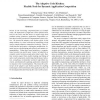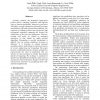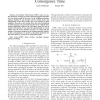573 search results - page 55 / 115 » Parallel Algorithms for Dandelion-Like Codes |
107
click to vote
IPPS
1999
IEEE
15 years 4 months ago
1999
IEEE
A structured approach to parallel programming allows to construct applications by composing skeletons, i.e., recurring patterns of task- and data-parallelism. First academic and co...
122
click to vote
IPPS
2007
IEEE
15 years 7 months ago
2007
IEEE
Solving optimally large instances of combinatorial optimization problems requires a huge amount of computational resources. In this paper, we propose an adaptation of the parallel...
96
Voted
IPPS
2007
IEEE
15 years 7 months ago
2007
IEEE
Driven by the increasing componentization of scientific codes, the deployment of high-end system infrastructures such as the Grid, and the desire to support high level problem so...
124
click to vote
WCRE
2002
IEEE
15 years 5 months ago
2002
IEEE
Scientific, symbolic, and multimedia applications present diverse computing workloads with different types of inherent parallelism. Tomorrow’s processors will employ varying com...
112
Voted
TIT
2008
15 years 15 days ago
2008
Abstract--Low-Density Parity-Check (LDPC) codes are usually decoded by running an iterative belief-propagation algorithm over the factor graph of the code. In the traditional messa...



